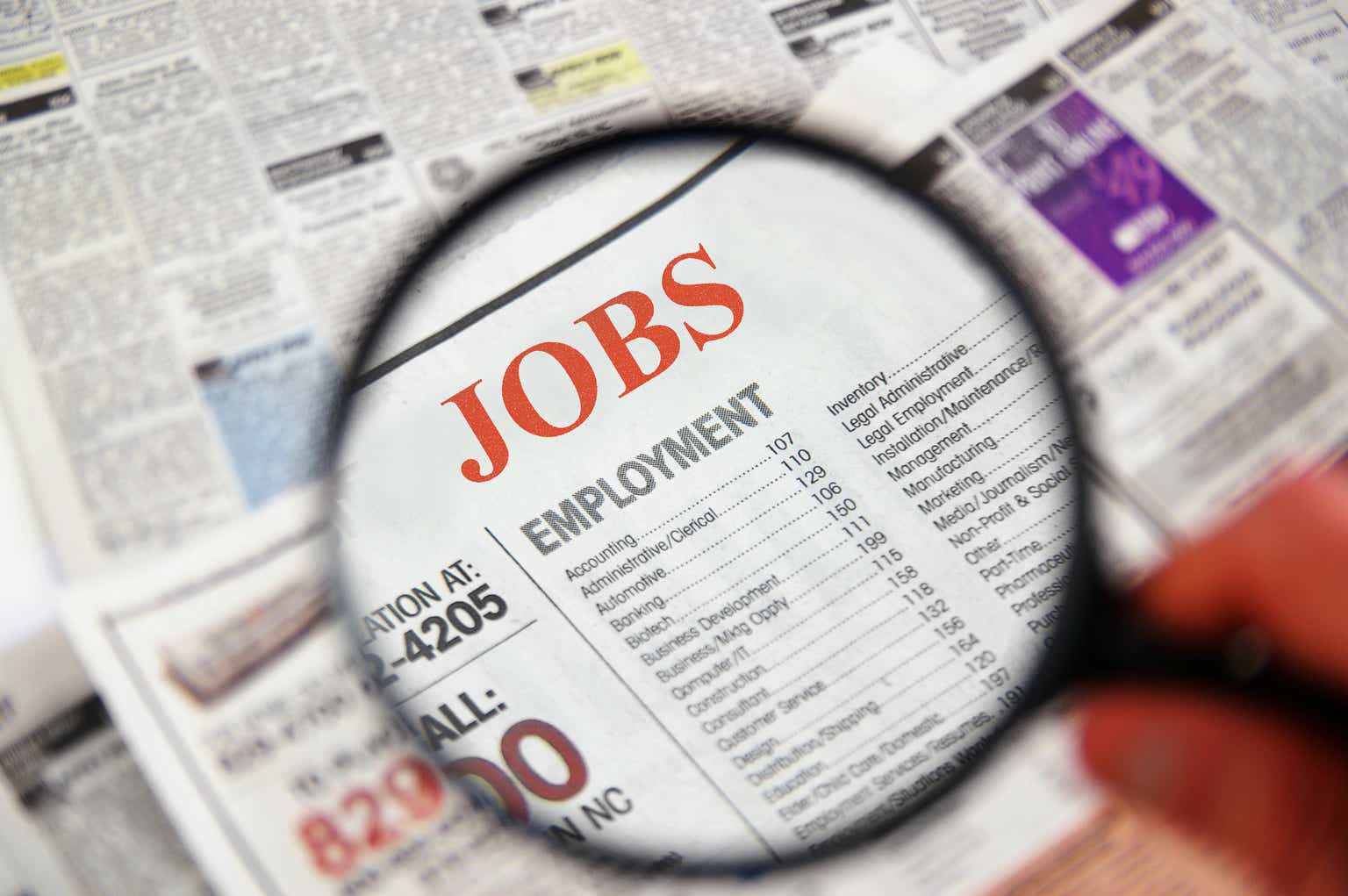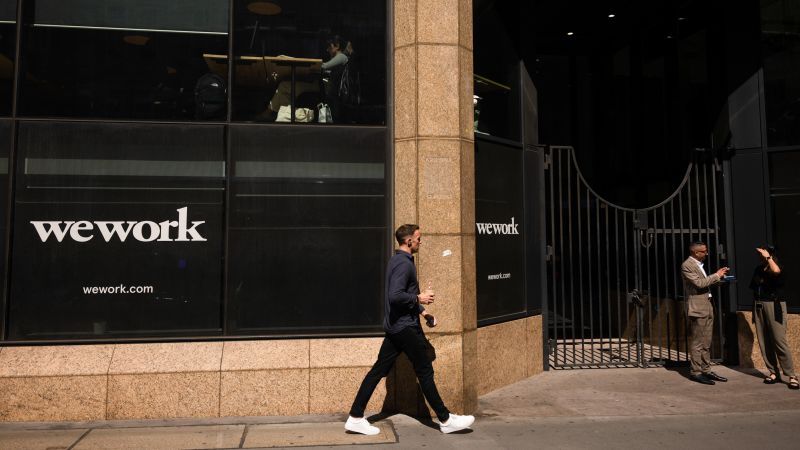On Wednesday, November 1, ADP reported that 113,000 private payroll jobs were created in October, which was well below the economists’ consensus expectation of 130,000 jobs.
Education and health services led the way with 45,000 new jobs, followed by trade, transportation and utilities, with 35,000 jobs.
ADP also reported that pay rose by 5.7% in the past 12 months, which is the slowest pace since October 2021, but above the inflation rate. Overall, this was positive and consistent with a soft landing.
On Friday, the Labor Department reported that 150,000 payroll jobs were created in October, which was also significantly below economists’ consensus estimate of 180,000, but the August and September payroll totals were revised down by 62,000 and 39,000, respectively, for a cumulative downward revision of 101,000.
This is one reason why I put such little faith in the Labor Department’s initial reports – these large revisions in later months. (The other reason is their huge “seasonal adjustments” to raw jobs data.)
The unemployment rate rose to 3.9% in October, up from 3.8% in September, and the Labor Department finally reported manufacturing job losses of -35,000 in October after 12 straight months of contracting manufacturing activity. In previous months, they had been “in denial” about manufacturing job losses.
The labor force participation rate slipped to 62.7%, the first decline in 12 months (since October 2022). Furthermore, average weekly hours declined to 34.3, down a notch from 34.4 hours in September, indicative of weaker employer demand.
Average earnings in October rose by 7 cents per hour or 0.2% to $34 per hour, and wages were up 4.1% in the past 12 months. Overall, this was a good payroll report, since it signaled that the Fed cannot raise rates and may have cut rates sooner rather than later.
In the past, I have said that the unemployment rate could top 4% due to the UAW strike, but apparently the UAW workers on strike do not show up on unemployment data due to a strike fund that covers them.
At any rate, Ford (F), GM (GM) and Stellantis (STLA) all now have tentative settlement agreements with the UAW. GM was the last to cave, after the UAW expanded its strike to GM’s Spring Hill, Tennessee facility. The big winner from the UAW strike remains Mexico, which is anticipated to benefit long-term from the strike.
The UAW strike, however, does impact manufacturing activity, since the Institute of Supply Management (ISM) reported on Wednesday that its manufacturing index declined to 46.7 in October, down from 49 in September.
The new orders component dropped to 45.5 in October, down sharply from September’s 49.7. Also notable is that the backlog of orders component remains especially weak at 42.2 in October, down from 42.4 in September. This is the 12th straight month the ISM manufacturing index has been below 50.
The other interesting news on Wednesday was that the Conference Board announced that its consumer confidence index slipped to 102.6 in October, down from a revised 104.3 in September.
This is the third straight monthly decline in consumer confidence, indicative that consumers are becoming increasingly pessimistic. The present situations component declined to 143.1 in October, down from 146.2 in September. The expectations component also declined to 75.6 in October, down from 76.4 in September.
In yet another sign of slowing global GDP growth, China’s National Bureau of Statistics on Wednesday announced that its purchasing managers index declined to 49.5 in October, down from 50.2 in September. Any reading below 50 signals a contraction. This deceleration surprised economists, since China recently implemented new economic incentives to stimulate growth, but it seems they are “pushing on a string.”
There is some good news on Europe’s inflation front. In the eurozone, consumer prices are now running at a 2.9% annual pace through October, down from a 4.3% annual pace in September.
This is the lowest rate of inflation in over two years. In the past 12 months, energy prices have fallen 11.1%, and food prices have risen 7.5%. In addition, Ireland and Germany’s GDP contracted in the third quarter and that also helps to reduce inflation. Overall, this is great news, indicative that inflation continues to moderate.
The Latest War News and its Impact on Energy Prices and Stocks
The Israeli invasion of Gaza, as part of their announced attempt to eliminate Hamas, is now underway. This new escalation in the war has fortunately not broken out on other fronts, despite some skirmishes.
Crude oil prices have moderated, but LNG prices remain high due to disruption fears as well as the fact that winter is fast approaching. Israel’s LNG exports to Egypt have been disrupted.
Additionally, Norway’s LNG exports were recently disrupted due to a problem with a compressor failure. My #1 LNG stock is Dorian LPG (LPG), which transports liquefied petroleum gas (LPG) through 25 LPG tankers worldwide.
The U.S. is “the Saudi Arabia of natural gas” and LPG exports are booming. Even though California and New York are trying to ban natural gas, the truth of the matter is that in the U.S., natural gas will be flared if it is not used, since much of the natural gas in the U.S. is a byproduct of crude oil production. Natural gas is much cheaper in the U.S. than most of the rest of the world, because natural gas is so abundant.
China continues to dominate the EV supply chain and is producing double the batteries that China needs domestically. This means that it will be cheaper to import batteries from China than produce batteries in the U.S., which is why Ford shelved its plans for a U.S. battery plant with CATL.
Furthermore, the UAW strike exposed the fear that workers would lose their jobs due to any conversion to electric vehicles (EVs).
Speaking of EVs, the Big 3 all curtailed their EV plans due to a lack of consumer demand. Apparently, consumers will not pay more for EVs, so they are being heavily discounted.
In fact, Ford is now losing $36,000 on every EV it sells, so it lost $1.3 billion on the 20,962 EVs it sold in the third quarter.
Even Tesla (TSLA) is now forecasting that it will lose money on its Cybertruck, which will begin shipping later this month. A big culprit in low EV sales is higher interest rates, which CEO Elon Musk has repeatedly cited.
Another casualty of falling EV sales is Tesla’s primary battery supplier, Panasonic (OTCPK:PCRFY), which lowered its 2023 battery profit forecast by 15%.
Although Panasonic has geared up to build Tesla’s new 4680 battery cells, the Tesla EVs above $80,000 are not selling well. If Panasonic is struggling to make money building EV batteries, all the other new battery plants in the U.S. are also expected to struggle.
Another casualty of higher interest rates is the domestic alternative energy industry, which is why I sold some green energy companies in the past week.
I was hoping that the transition to big green commercial projects, especially battery installations for utilities, would help make the transition from falling demand for home solar and battery installations, but the high interest rate environment has squelched commercial demand, as utilities have also curtailed investing in more green energy solutions.
Looking forward, as the EV and green revolution stalls, any confidence in the Biden Administration’s economic incentives now seem futile, since the federal budget deficit is spinning out of control due to two proxy wars the U.S. is now funding.
Although Joe Biden will be apparently buying a lot of ads during the coming Super Bowl to convince voters that he has done a good job and deserves to be re-elected, many voters are not buying it any more. As a result, both consumer and investor confidence has been shaken.
Going into 2024, the Federal Reserve is likely going to be blamed for any economic problems, due to the high interest rate environment. The Fed hates being in the spotlight, so I expect the Fed will be lowering key interest rates in early 2024.
Inflation continues to cool, so the Fed will be able to cut its key interest rates early in the New Year. This should eventually help to boost both investor and consumer confidence.
Speaking of central banks, according to the World Gold Council, central bank buying of gold has risen 14% in the first nine months of this year, to 800 metric tons.
The People’s Bank of China has led the central bank gold-buying this year and reportedly bought 181 tons of gold. Poland bought 57 tons, followed by Turkey, with 39 tons.
Due to the tension in the Middle East, I suspect this gold buying will persist. Buying pressure by central banks will likely keep gold prices firm, so gold may yet stay above $2,000 per ounce.
Year-end Earnings Reports and Holidays May Make November a Time to Celebrate
In conclusion, Treasury bond yields have “cracked” and begun to meander substantially lower, which triggered a major stock market rally and an early “January effect” last week.
Fed Chairman Powell and the FOMC statement on Wednesday painted a picture of decelerating inflation that Wall Street celebrated.
The other good news is that our stocks are still in the midst of announcing their third quarter results, so I am still expecting the early January effect to persist due to improving earnings and record low valuations.
The corporate earnings environment for the next three quarters are forecasted to be explosive, due to easier year-over-year comparisons. The leading industry for this earnings explosion will be the fossil fuel industry, due to persistently high crude oil and natural gas prices.
I should add that an El Nino weather pattern, which impacts the subtropical jet stream, is supposed to make the upcoming winter wet and cold. (I recently drove over Donner Pass in a snowstorm and have already put snow tires on a couple of my vehicles in my Reno home, since it is now abnormally cold for much of the U.S. in early November.)
Earnings continue coming in better than expected. In the S&P 500, after more than 60% of the third quarter results have been announced, average sales have come in 0.8% better than expected, while average earnings have come in a whopping 8.3% better than expected.
As an example of how earnings surprises are still working so well, e.l.f. Beauty (ELF), on Wednesday, announced that its sales in its latest quarter surged 76.2% to $215.5 million, compared to $122.3 million in the same quarter a year ago.
During the same period, the company’s earnings rose 176.2% to $33.3 million or 58 cents per share, compared to $11.7 million or 21 cents per share. Excluding extraordinary items, the company’s operating earnings were 82 cents per share.
The analyst community was expecting sales of $197.1 million and operating earnings of 53 cents per share, so e.l.f. Beauty posted a 9.3% sales surprise and a 54.7% earnings surprise.
Since Thanksgiving is fast approaching, I should remind you why Americans are so lucky. First, the U.S. (and Canada) are both food and energy-independent, while China, Japan and Europe depend on food and energy imports.
Second, what makes America great is that we have 50 states competing with each other for businesses and customers, so economic growth naturally gravitates to states with the best economic incentives.
Finally, in the U.S. we have major Presidential elections every four years. The candidate that promises the most economic freedom typically prevails.
Navellier & Associates owns e.l.f. Beauty, Inc. (ELF), Dorian LPG Ltd. (LPG), Panasonic Holdings Corporation Sponsored ADR (PCRFY), and Ford Motor Co. (F) in some managed accounts, and one client holds Tesla (TSLA), per client request in managed accounts. We do not own Stellantis (STLA), or General Motors (GM). Louis Navellier and his family own e.l.f. Beauty, Inc. (ELF), Dorian LPG Ltd. (LPG), and Panasonic Holdings Corporation Sponsored ADR (PCRFY), via a Navellier managed account. They do not personally own Tesla (TSLA), General Motors (GM), Stellantis (STLA), or Ford (F).
All content above represents the opinion of Louis Navellier of Navellier & Associates, Inc.
Disclaimer: Please click here for important disclosures located in the “About” section of the Navellier & Associates profile that accompany this article.
Disclosure: *Navellier may hold securities in one or more investment strategies offered to its clients.
Original Post
Editor’s Note: The summary bullets for this article were chosen by Seeking Alpha editors.
Editor’s Note: This article discusses one or more securities that do not trade on a major U.S. exchange. Please be aware of the risks associated with these stocks.
Read the full article here







